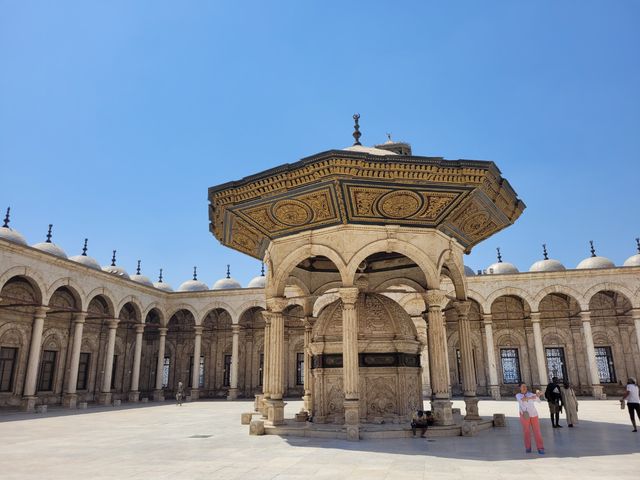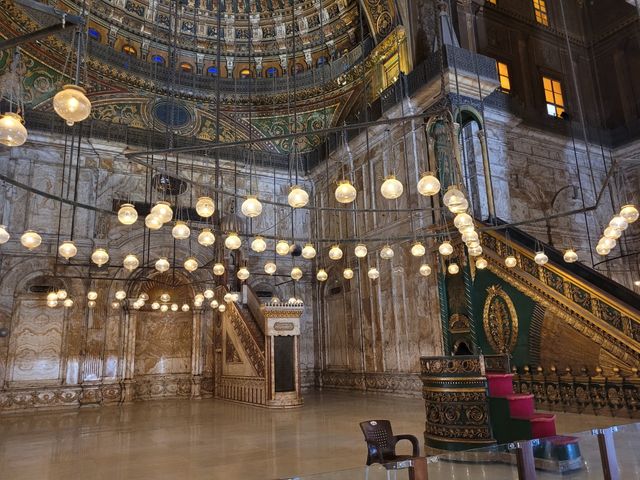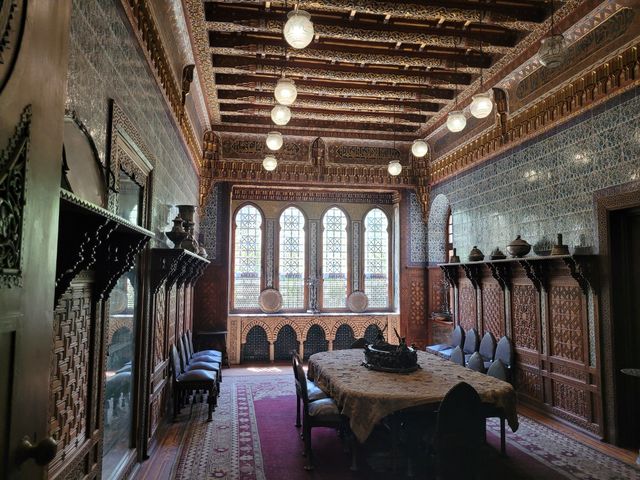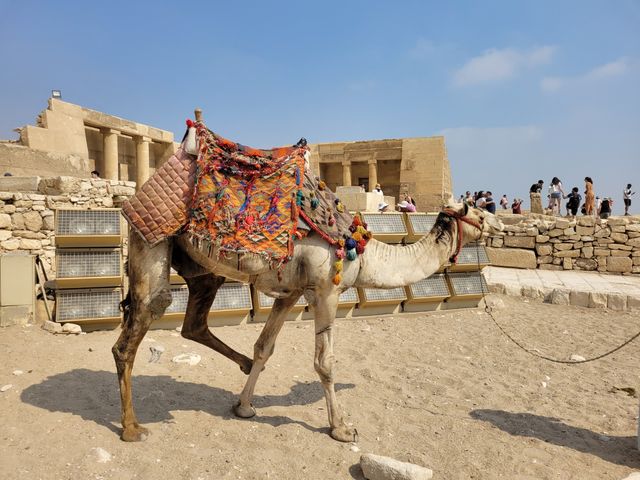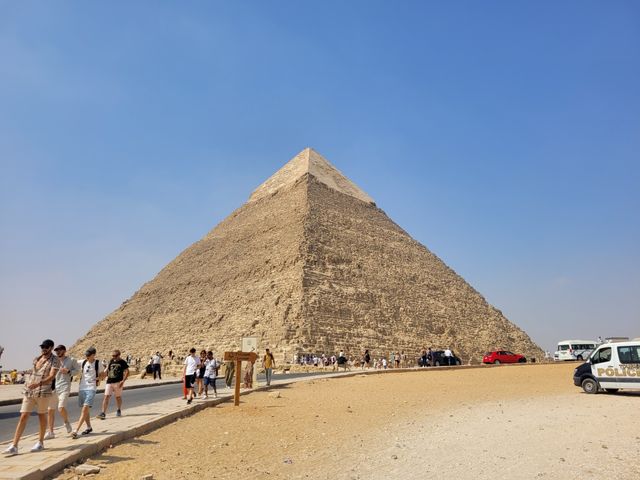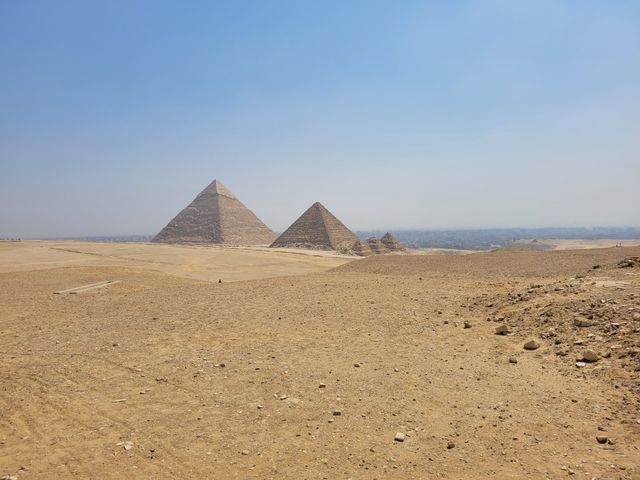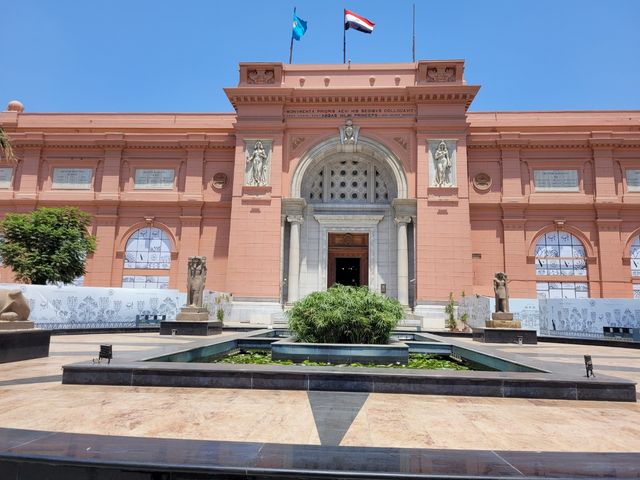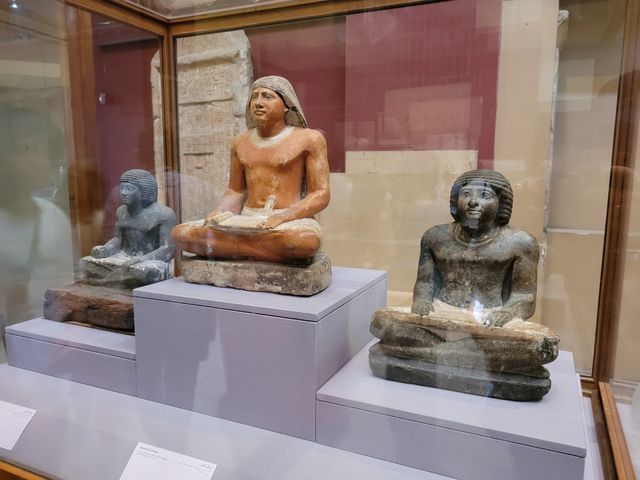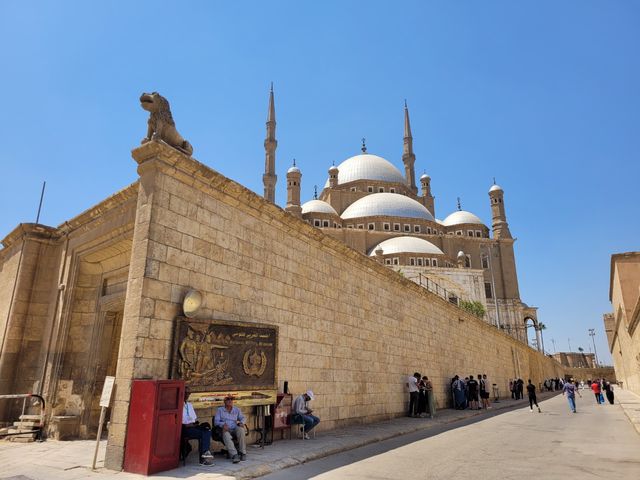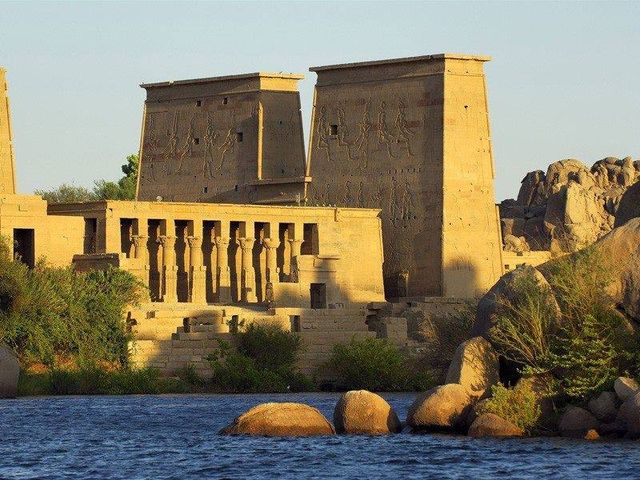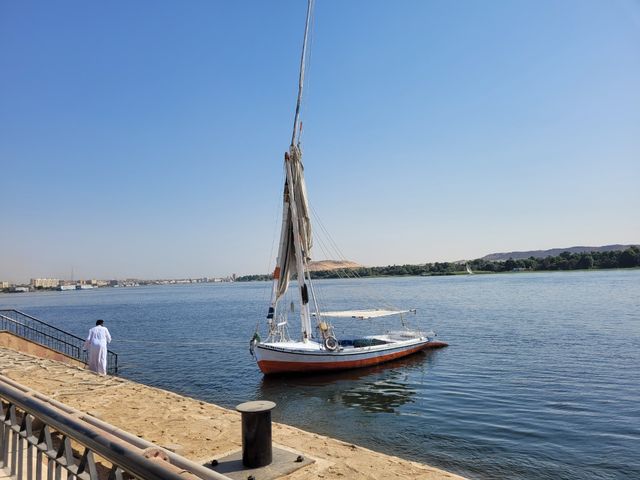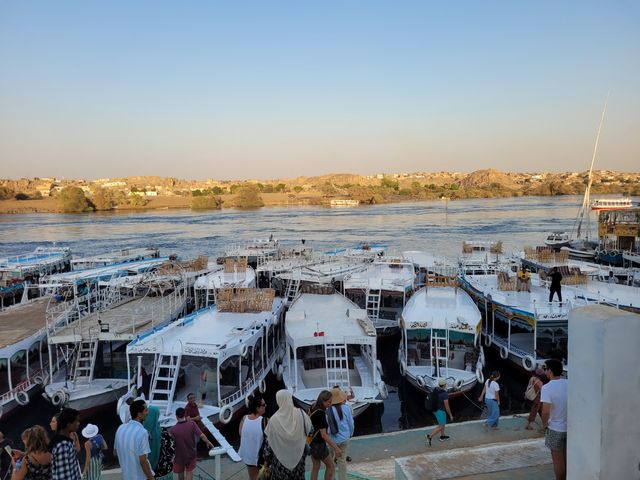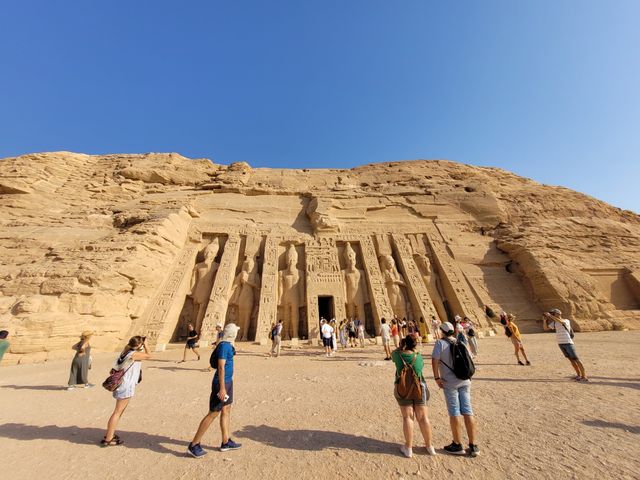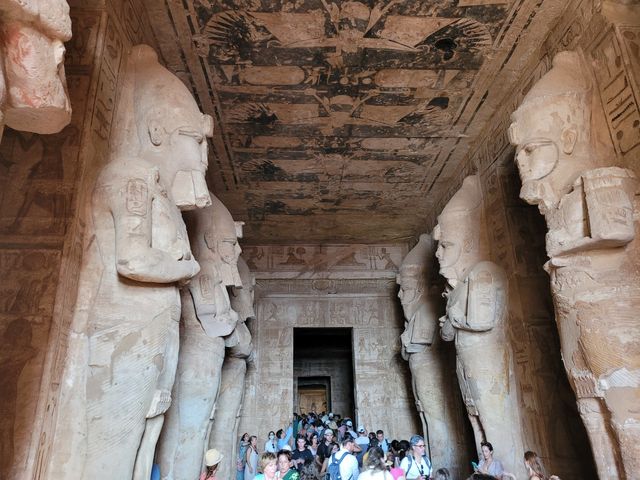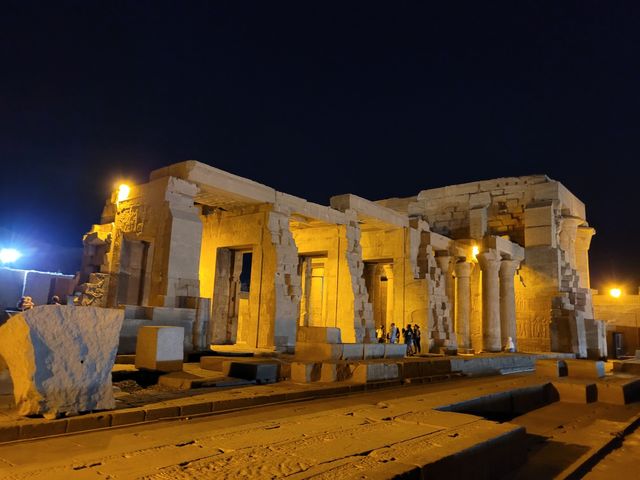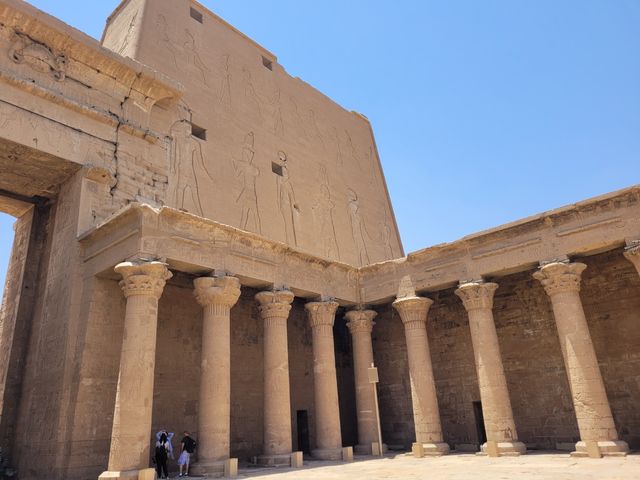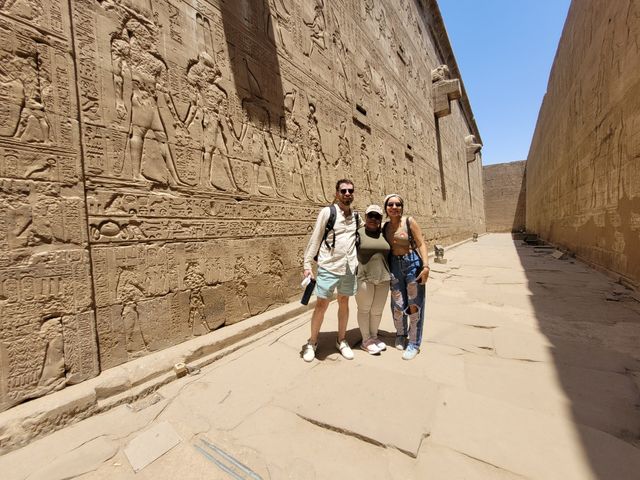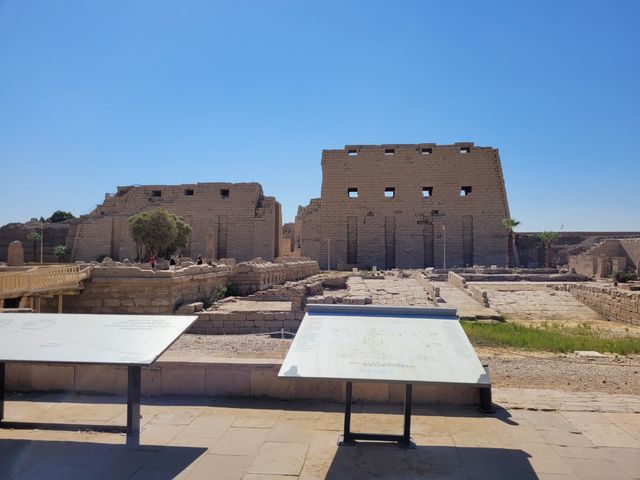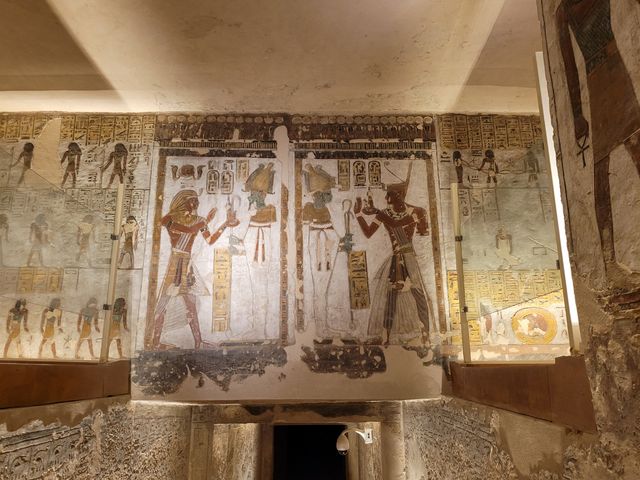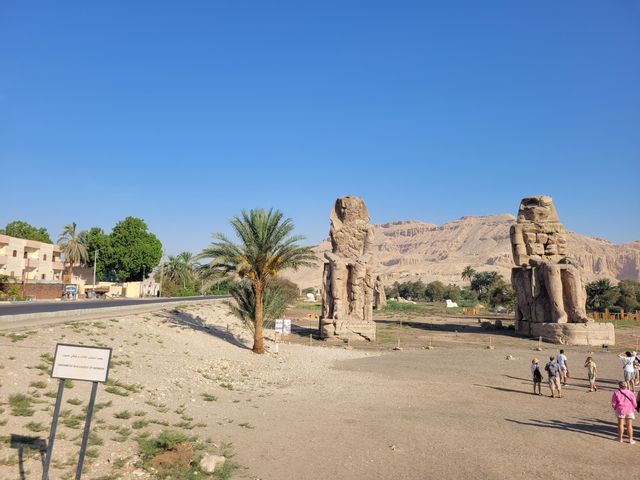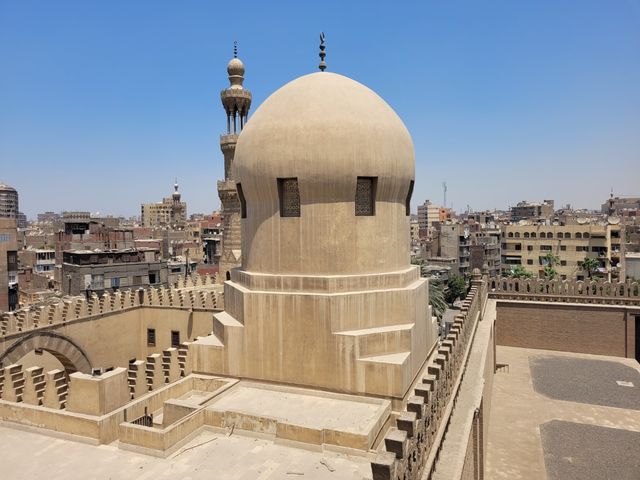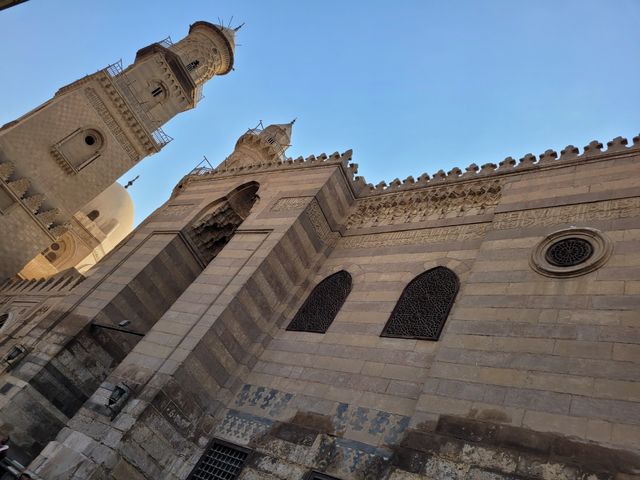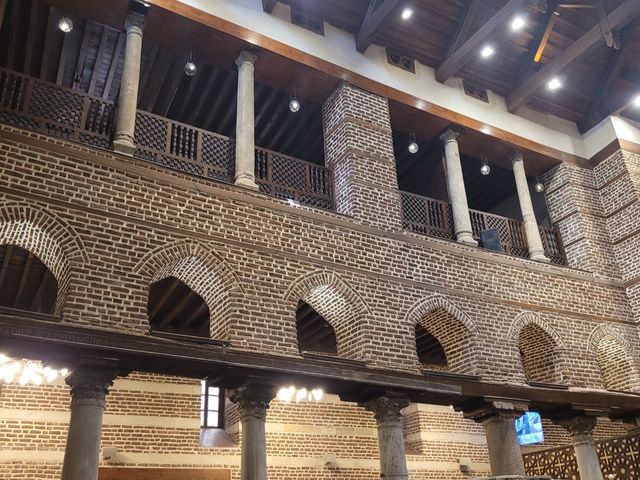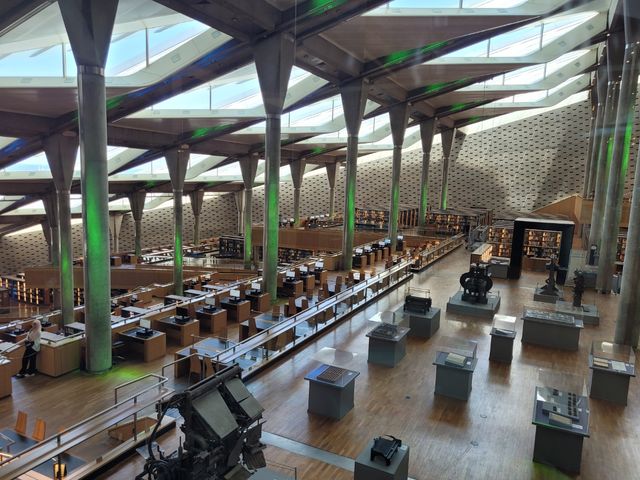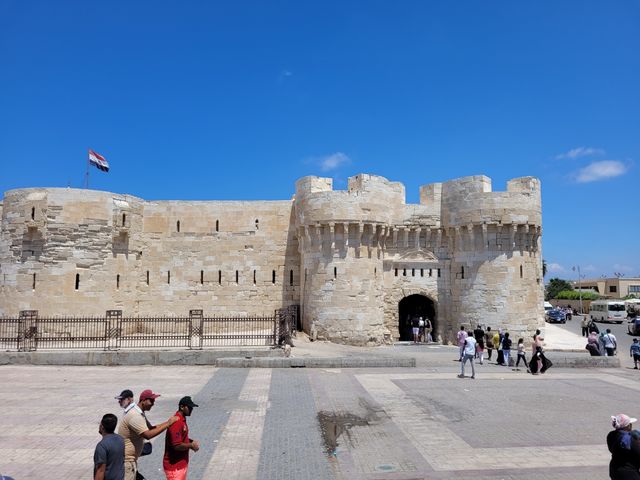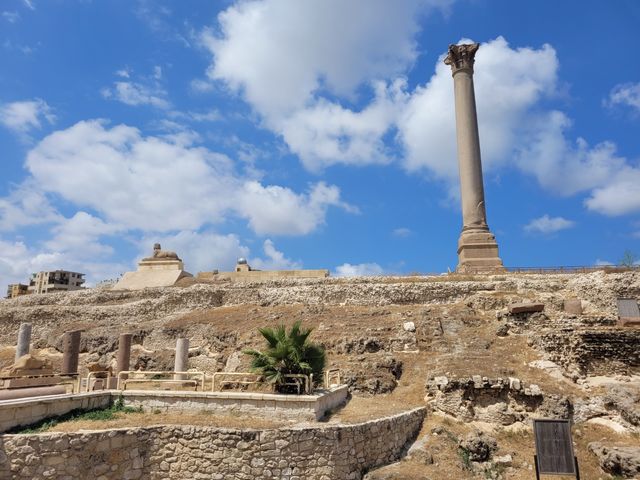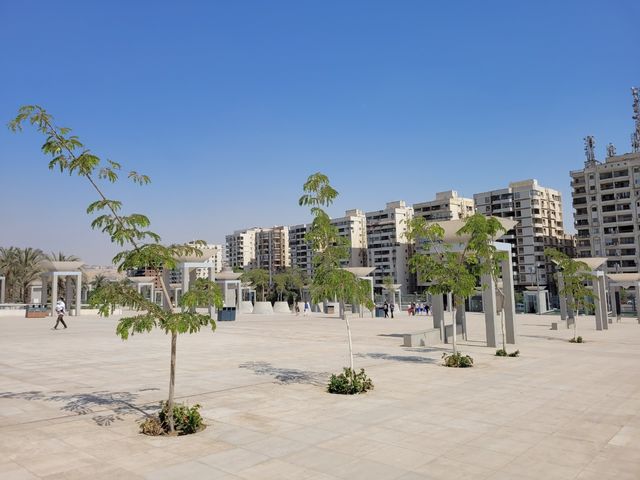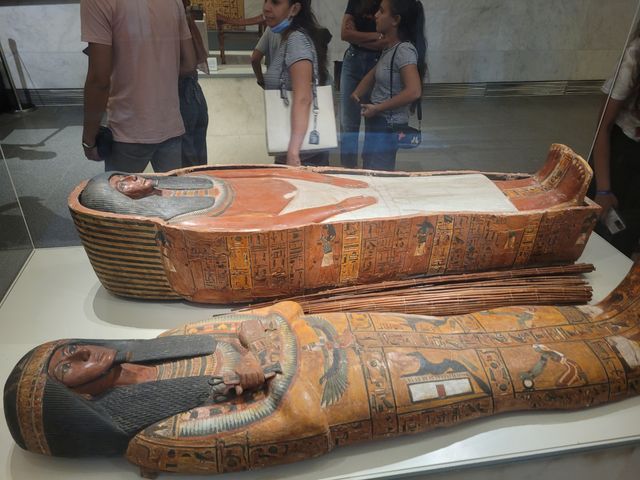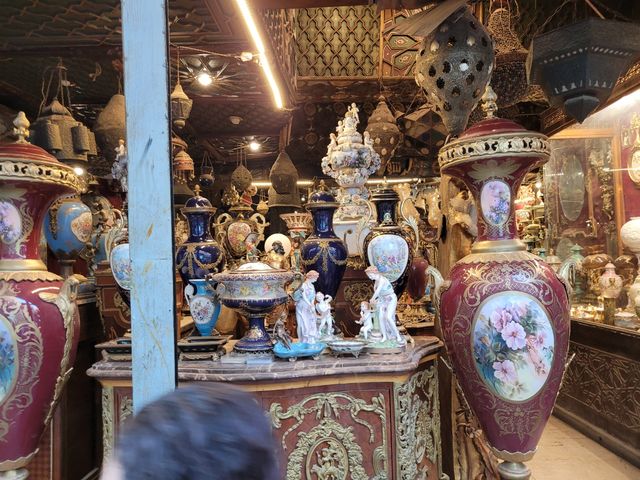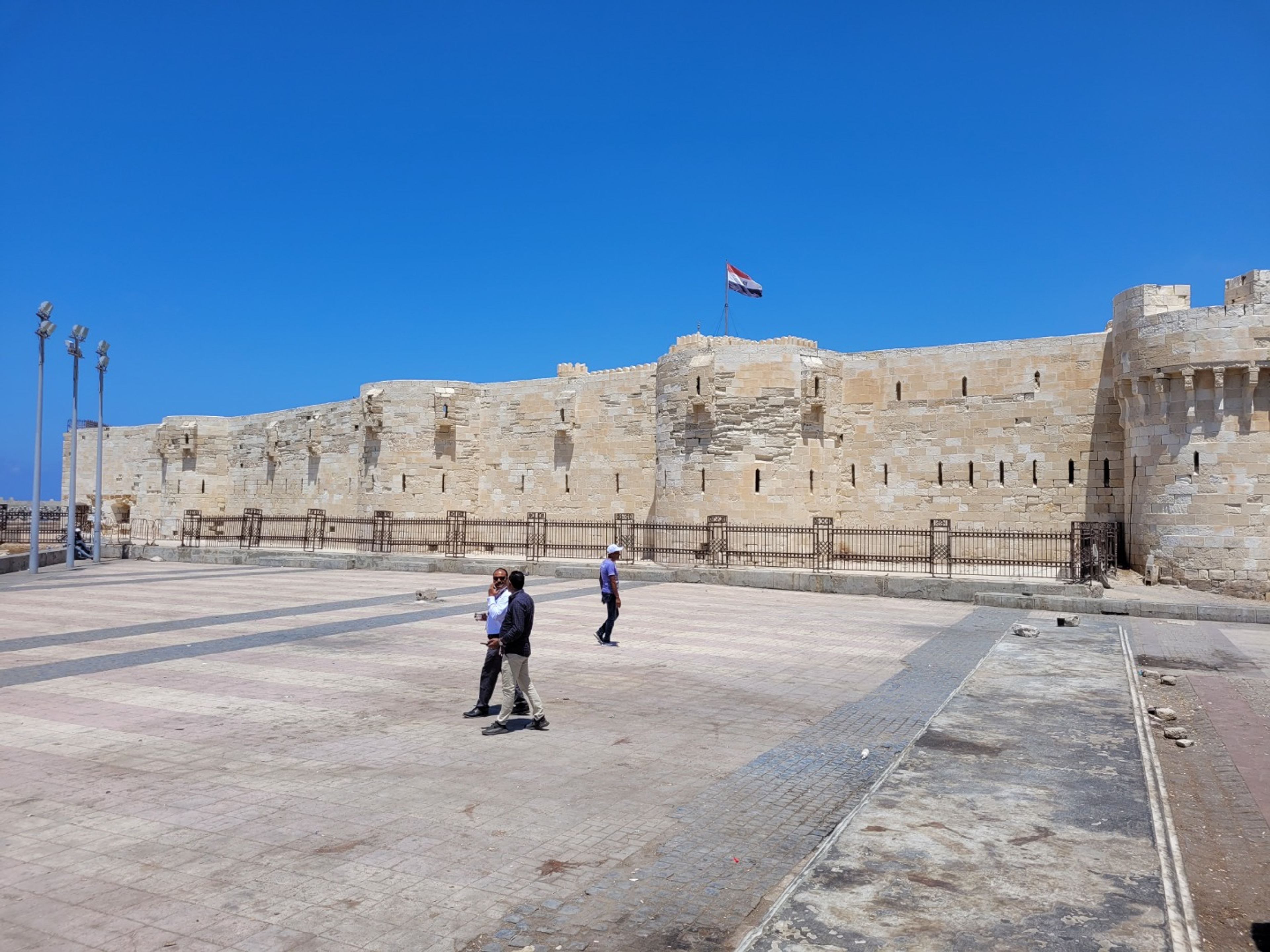
EGYPT SPECIAL Private Tour.
Through the tour The Egypt Special you can discover unique cities and captivating places that you will never forget.
EGYPT SPECIAL Private Tour.
(CAIRO - ALEJANDRIA - ASWAN - KOM OMBO - EDFU - ESNA - LUXOR - CAIRO).
Days of arrival in Egypt prior to the program departure: Sunday and Tuesday.
Iconic Cities and Impressive Landscapes of Egypt. Embark on a once-in-a-lifetime journey through Egypt’s most iconic cities and breathtaking landscapes, where history, culture, and timeless wonders await at every turn. From the eternal majesty of the Three Pyramids of Giza and the enigmatic Great Sphinx to the Valley Temple of Pharaoh Khafre, you will stand face to face with monuments that have defied time for over 4,000 years. In Cairo, discover the treasures of the Egyptian Museum of Pharaonic Art, the Citadel of Saladin crowned with the Alabaster Mosque, and lose yourself in the lively alleys of the famous Khan El Khalili market. Step into the spiritual heart of the city with a visit to the Coptic Quarter, where the Church of St. Sergius and the Ben Ezra Synagogue preserve centuries of sacred history.
Sail south along the legendary Nile and experience the engineering marvel of the High Dam of Aswan, the enchanting Temple of Philae, and enjoy a romantic felucca ride on the gentle waters of the river. Explore the Temple of Kom Ombo, dedicated to two gods, and the fascinating Museum of Mummified Crocodiles. Admire the grandeur of the Temple of Edfu, before reaching Luxor, the world’s greatest open-air museum. Here, marvel at the splendor of the Temple of Luxor and the monumental Temples of Karnak. Cross to the West Bank to uncover the mysteries of the Valley of the Nobles, the Temple of Medinat Habu, the Valley of the Craftsmen, and the legendary Valley of the Kings, final resting place of the pharaohs. Stand before the awe-inspiring Temple of Queen Hatshepsut, a masterpiece of ancient architecture, and the towering Colossi of Memnon.
Extend your discovery to Alexandria, the Pearl of the Mediterranean, where you will descend into the mysterious Catacombs of Kom El Shokafa, admire the mighty Pompey’s Column, and explore the legendary Library of Alexandria. End your visit with a panoramic view of the majestic Qaitbay Citadel, guardian of the ancient port. This is more than a journey—it is a passage through the soul of ancient and modern Egypt, where every monument tells a story and every moment leaves an indelible memory.
- Since they were created more than 4000 years ago, the pyramids of Egypt have been the most prodigious and emblematic monuments of the Egyptian civilization, as well as the oldest and unique wonder that is preserved, and in particular it is worth noting, THE THREE PYRAMIDS OF GIZA, the tombs of the kings Cheops, Khafre and Menkaure, whose construction dates back, for the vast majority of scholars, to the period called the Old Kingdom of Egypt.
- THE GREAT SPHINX OF GIZA is an imposing sculpture with a human head and a lion's body located next to the Pyramids of Giza. It is one of the most extraordinary and iconic monuments not only in Egypt, but in the entire world.
- THE TEMPLE OF THE VALLEY is the name of a construction attached to each pyramid. It acted as an entrance to the funerary complex and was linked to the funerary temple (located next to the pyramid) by a causeway. The best known Valley Temple is that of Khafre, located in his funeral complex in Giza; 500 m from the Pyramid of Khafre, it is close to the Great Sphinx and almost intact, having been covered by sand until the 19th century.
- THE EGYPTIAN MUSEUM OF PHARAONIC ART houses the largest collection of objects from the time of Ancient Egypt; It possesses more than 136,000 classified objects from different periods of Egyptian history: Tinite, Old Kingdom, Middle Kingdom, New Kingdom, Third Intermediate Period, Late, Hellenistic and Roman, surpassing other museums not only for the quantity, but also for the importance of many of them.
- KHAN EL KHALILI OR JAN EL JALILI, is the most famous market in Egypt and the entire Middle East. Its origin dates back to the year 1382, when the Mamluk Sultan Djaharks el-Khalili decided to build a resting place for merchants. The chosen place was the ruins of an ancient Fatimid cemetery.
- THE CITY OF CAIRO or Saladin Citadel is a medieval fortification from the Islamic era in Cairo, Egypt, built by Salah ad-Din and developed by later Egyptian rulers.
- THE MOSQUE OF MEHMET ALI PASHA, also known as Alabaster Mosque is a mosque located in the highest part of the Citadel of Cairo, in the capital of Egypt. It was built at the behest of the Ottoman governor Mehmet Ali between the years 1830 and 1848.
- KHAN EL KHALILI, or Khan El Jalili, is the most famous market in Egypt and the entire Middle East. Its origin dates back to the year 1382, when the Mamluk Sultan Djaharks el Jalili decided to build a resting place for merchants. The chosen place was the ruins of an ancient Fatimid cemetery. No visit to Cairo is complete without a stop at Khan el Jalili Bazaar, where you will be transported back in time to an ancient Arab souk.
- One of the epicenters of the city of Cairo that the traveler must take into account is the today called QUARTER QASR AL-SHAM, also known as the NEIGHBORHOOD COPTO of Cairo. The name "Coptic" was given to those indigenous inhabitants who resided in the city when the Arabs conquered Egypt.
- THE CHURCH OF SAINTS SERGIO AND BACO is one of the oldest churches in Egypt, located in Old Cairo and dated to the 4th or 5th century. According to Tradition, it was built in the place of stay of the Holy Family during his stay in Egypt.
- THE BEN EZRA SYNAGOGUE sometimes known as the El-Geniza Synagogue or the Synagogue of the Palestinians, is located in Old Cairo, Egypt. According to local tradition, it is located on the site where locals believe baby Moses was found.
- THE ASWAN DAM OR ASUAN DAM is a mega construction, designed in 1956 and built between 1959 and 1970 by the Egyptian and Soviet governments, in order to end the floods that occurred in the territory of the under the Nile as a consequence of the sudden increase in the flow of the Nile.
- THE PHILAE TEMPLE, in Egypt, is one of the most important and beautiful on the banks of the Nile. Not without reason, it is known as The Pearl of the Nile. ... Philae was located in the region of Nubia and It is, in fact, one of the most important temples in this region, annexed to the land of the pharaohs during the New Kingdom.
- THE TEMPLE OF KOM OMBO an unusual double temple built during the reign of the Ptolemaic Dynasty, in the Egyptian city of Kom Ombo. In the period of Roman domination, some extensions were made. The construction is unique due to its double design, which means that there were duplicate entrances, courtyards, halls, chapels and shrines for two gods: Sobek and Haroeris.
- THE TEMPLE OF EDFU was buried under centuries of sand and silt until the 19th century, when the French Egyptologist Auguste Mariette rediscovered the site. The complex is one of the best preserved sites in Egypt today; its architecture is very intact, and the building contains a large number of legible inscriptions on its walls.
- THE TEMPLE OF LUXOR Located in the city that bears his name and discovered in 1884, the Temple of Luxor is one of the most spectacular temples in Egypt and the most important monument in Luxor. The Temple of Luxor was built between 1400 and 1000 BC. by the pharaohs Amenhotep III and Ramses II, the first built the inner part and the second the outer enclosure, adding the façade, the colossi and the obelisks.
- THE VALLEY OF THE ARTENSANS is the necropolis of Deir el-Medina, where the builders of the tombs of the Valley of the Kings are buried, who lived in a town built especially for them, Deir el-Medina (Set maat , place of Maat or Truth), to keep them apart from the rest of the population and thus preserve the secrets of the royal tombs.
- THE TEMPLE OF HATSHEPSUT is located in El Deir El Bahari, on the West Bank of the Nile, opposite the city of Luxor, in the south of the country. It was built on the orders of Queen Hachepsut, daughter of Tuthmosis I, who reigned Egypt for 20 years during the 18th dynasty (1490 - 1469).
- LOS COLOSOS DE MEMON are two gigantic stone statues representing Pharaoh Amenhotep III, who ruled during the 18th Dynasty of Egypt. They are located on the west bank of the Nile, opposite the Egyptian city of Luxor, near Medinet Habu and south of the great Theban necropolis. The two twin statues show Amenhotep III in a seated position; his hands rest on his knees and his gaze is directed east, toward the river Nile and the rising sun.
- THE VALLEY OF THE KINGS is the place where most of the pharaohs of the New Kingdom were buried, that is, from that time when ancient Egypt was an empire that extended along the eastern coast of the Mediterranean ( the 18th, 19th and 20th dynasties). It was there that they were buried, for example Thutmose III, Tutankhamun or Ramses II.
- THE CATACOMBS OF KOM EL SHOGAFA are located on Bab el Molouk street, in the Karmouz neighborhood of Alexandria. Its bas-relief decorations show a mix between Egyptian and Greco-Roman artistic forms, and it is considered one of the most important archaeological sites in the city.
- THE VALLEY OF THE ARTENSANS is the necropolis of Deir el-Medina, where the builders of the tombs of the Valley of the Kings are buried, who lived in a town built especially for them, Deir el-Medina (Set maat , place of Maat or Truth), to keep them apart from the rest of the population and thus preserve the secrets of the royal tombs.
- THE COLUMN OF POMPEY is located in the archaeological park of the city of Alexandria, in the place where the temple of Serapeo was in ancient times. It is a column made of Aswan red granite, and it is the largest of its kind built outside of the imperial capitals of Rome and Constantinople.
- THE VALLEY OF THE NOBLES is an area of Egypt located next to the Valley of the Kings and the Valley of the Queens, west of Luxor (ancient Thebes), on the western bank of the River Nile. It contains the tombs of important characters in the environment of the pharaoh.
- THE FAMOUS LIBRARY OF ALEXANDRIA (in ancient Greek, Βιβλιοθήκη τῆς Ἀλεξάνδρειας; in Latin, Bibliotheca Alexandrina) was one of the most important and prestigious libraries and one of the largest centers for the dissemination of knowledge of Antiquity. Instituted in the 3rd century BC. C. in the palace complex of the city of Alexandria during the Hellenistic period of Ancient Egypt.
- THE FORT OF QAITBAY, also known as the Citadel of Qaitbay, is a 15th century defensive fortress located in Alexandria, Egypt. The Fort is located in the eastern part of the island of Faro in the port of Alexandria.
HIGHLIGHTS
- Departure from CAIRO
- Private package
- History & cultural tour
- Offered in Spanish and English
- 5 Stars Rating
included
- 5 Nights at the hotel in Cairo on a Bed and Breakfast basis. Of category 5 Stars Superior Luxury.
- 1 nights at the hotel in Luxor on a Half Board basis. Of category 5 Stars superior luxury.
- 3 nights full board cruise on the ship from Aswan to Luxor without drinks. Of category 5 Stars Superior Luxury.
- All transfers from the hotel or the airport and vice versa in air-conditioned (private) coaches.
- Cultural Egyptologist guide (private) one of the best guides in Egypt during all included visits. (with individual bookings, there is a private guide for Cairo tours and another private guide for Luxor and Aswan tours)
- All those aware of the mentioned visits: The Three Pyramids of Giza, The Great Sphinx, The Temple of the Valley of Pharaoh Kefren, The Egyptian Museum of Pharaonic Art, The Citadel of Saladin with the Alabaster Mosque, The Famous Khan el market Khalili, The Coptic Quarter (with St. Sergius Church and Ben Ezra Synagogue), Aswan High Dam, Philae Temple, Romantic Felucca Ride on the Nile, Kom Ombo Temple, The Crocodile Museum Mummified, The Temple of Edfu, The Temple of Luxor - The Karnak Temple, The Valley of the Nobles, The Temple of Medinat Habu, The Valley of the Kings, The Temple of Queen Hatchepsut, The Colossi of Memnon, Visits of Alexandria; (The Kom Al Shokafa Catacombs, Pompey's Column, The Famous Library of Alexandria, Panoramic Tour of the Qaitbay Castle).
- 1 Extra Meal during the visit in Cairo.
- 1 Extra Meal during the visit in Alexandria.
VERY IMPORTANT NOTES:
- The hotels and cruise ships indicated in the program will be confirmed in principle. If, in exceptional circumstances, it is necessary to change them, our agency will assign other hotels and cruise ships on the Nile River of a similar or higher category.
- The general itinerary of the program may vary and be modified depending on the itinerary and departure dates of the Nile River cruise.
- The museum included in the Cairo excursions is the Egyptian Museum of Pharaonic Art. Should you wish to substitute this visit with the Grand Egyptian Museum (GEM), a supplement of = USD 40 per person will apply.
- Alternatively, if you would like to visit the GEM as an additional tour (in addition to the Egyptian Museum), the cost will be = USD 65 per person will apply.
- If you wish to upgrade the hotel or cruise category, the rate will be adjusted accordingly.
- The cultural Egyptologist guide service for the program is offered in Spanish. Services in English and other languages (subject to availability) can be provided at an additional cost.
not included
- International flights or domestic flights. (The price of domestic flights will be according to the class of the seat and the day of the issue).
- The entry visa to the country with assistance in Spanish and transfer to the hotel = $ 30 per person.
- The service fee + security plan + general tips for "porters, drivers, restaurants… ..etc." + cruise crew = $ 50 per person. (This value does not include the tip for the tour guide's service).
- All drinks and Any extras or visits not mentioned in the program.
- Telephone calls, laundry services throughout the trip or any other personal expense not mentioned.
- The guide's tips are set aside at the discretion of the client.
- Excursion to The Valley of the Craftsmen (THE VALLEY OF THE ARTENSANS)
- Breakfast or lunch in a local restaurant in Luxor.
- Excursion to Temples of Abu Simbel.
IMPORTANT NOTES:
- Rates expressed in American Dollars.
- Rates per person according to selected accommodation.
- Services provided in Private.
- Services provided with the accompaniment of a permanent guide.
- Services subject to availability at the time of booking.
- Services reserved and not taken, will not be reimbursed.
- Non-commissionable NET rates.
- Exclusive Rates for International Wholesale Agencies.
- Tax-exempt rates for foreign passengers.
- In case of not having availability in the planned hotels, their services will be confirmed in a hotel of a similar category.
RECOMMENDATIONS:
- Bring a fanny pack for money and documents. There is less risk of theft than anywhere in the world. Egyptians abhor stealing, but there are not only Egyptians.
- Bring a small backpack for excursions, for water, camera, light jacket.
- It is advisable to bring a compass, a hand-cranked flashlight, a notebook and a pen.
- Bring a coat for the night on the boat and some temples that are visited at night.
- Bring loose change, about 10 euros for the first days. In Egypt, vendors and guides can exchange coins for small bills (5 and 10 euros or dollars).
- In hotels there are banks and money can be withdrawn or exchanged. The change is the official one.
- Leave space in the suitcase for your purchases that always come back more loaded. On boats and hotels there is a laundry service.
- Comfortable footwear to walk a lot, better if it is an ankle. Although it is not "adventure tourism" and children or very old people go, we visit places with stones, sand, tunnels, stairs ...
- Clothes: on the boat and hotels they wash clothes, but it is better to bring enough for a single wash in boat or hotel ...
- Check-in time at almost all hotels in Egypt is at 2:00 p.m. and check-out time is at 12:00 p.m. Photography during your Egypt Tours is allowed in most historical sites and museums, but in some museums like the Egyptian Museum and the Valley of the Kings in Luxor there is a fee.
- During your Egypt Holidays Try eating "Fool" Egyptian beans and "Koshary", a traditional Egyptian dish made from different ingredients.
- When visiting mosques it is recommended to wear modest clothing, remove shoes and for women to cover their hair.
- Credit cards are widely used in hotels, restaurants and cafes that are in tourist places. Visa and Master Card are the most used.
- There are several transportation options available in Cairo, the fastest and easiest is to take a taxi. White taxis, which use an odometer, would be a good option if you want to go anywhere near Cairo. It is advisable to avoid taking the black and white taxis, since they do not use the meters and the drivers always ask for an exaggerated rate. There is also the service of ordering an Uber and there is the subway to go from one place to another within Cairo. Although the metro can be quite crowded during rush hours.
- Most of the historical monuments and museums in Egypt open at 9 am until 5 pm. Historic outdoor sites, such as the Pyramids of Giza, are open from 8 am to 5 pm. Some museums have opening hours in the morning from 9 am to 4 pm. During Ramadan, the holy month of the Islamic calendar, keep in mind that these times will change significantly.
DIA 1CAIRO.
CAIRO Modern car or microbusArrival in Cairo. Upon arrival at Cairo International Airport, you will receive a warm welcome from our local team, who will assist you with all visa and customs procedures to ensure a smooth and smooth process. Transfer by private vehicle to your select hotel in the Egyptian capital, where you can relax after your journey. Vibrant and enigmatic, Cairo is the gateway to a world steeped in history. From your first night, you can feel the energy of this metropolis that combines modernity with tradition. Accommodation at your hotel and overnight in Cairo, preparing for the beginning of an unforgettable experience in the land of the pharaohs.
DIA 2CAIRO.
CAIRO Modern car or microbusBreakfast at the hotel. Departure to visit the necropolis of Giza, in it are the famous pyramids built by the pharaohs of the fourth dynasty Cheops, Khafre and Menkaure. Since they were created more than 4000 years ago, the pyramids of Egypt have been the most portentous and emblematic monuments of the Egyptian civilization, as well as the oldest and unique wonder that is preserved, and in particular it is worth noting, the three great pyramids of Giza, the tombs of the kings Khufu, Khafre and Menkaure, whose construction dates back, for the vast majority of scholars, to the period called the Old Kingdom of Egypt. It is worth mentioning that the Pyramids are not only the most important monuments in Egypt, but also the oldest in the world.
The great Sphinx and the temple in the valley of Pharaoh Khafre, are funerary constructions that were built under the orders of pharaohs of the fourth dynasty. The Sphinx was the first truly colossal piece of sculpture from ancient Egypt. The Egyptians would not carve statues of these proportions again until the reigns of the New Kingdom pharaohs, some some 1,200 years later. It was carved out of the natural bedrock at the very base of the Quefrén causeway in the shape of a real human head on a lion's body, symbolizing the power and strength controlled by the pharaoh's intelligence. The temple in the valley of Quefrén was built with megalithic blocks covered with red granite and the entrances to the temple were closed with huge one-leaf doors, probably made of cedar wood. The close association of the Sphinx with the Quefrén valley makes it more than likely that the Sphinx were carved for Quefrén. The sphinx is one of the great mysteries of all time and over several centuries there have been numerous speculations of archaeologists about its origin, its date of creation or its function.
At the end return to the hotel and night in Cairo.
DIA 3CAIRO.
CAIRO Modern car or microbusCairo – Ancient Egyptian Treasures and Local Life. After breakfast at the hotel, we'll begin the day with a fascinating visit to the Egyptian Museum of Pharaonic Art, a true sanctuary of history that houses the largest collection of ancient Egyptian antiquities. Here you can admire unique pieces ranging from monumental statues to delicate jewels, as well as the famous relics of Tutankhamun (will be moved to the new Grand Egyptian Museum (GEM)), authentic masterpieces that have captivated the world. The route continues to the imposing Saladin Citadel, a symbol of medieval power and defense, where the majestic Alabaster Mosque of Muhammad Ali stands out, a jewel of Islamic architecture offering breathtaking panoramic views of Cairo. Nearby is the Coptic Quarter, a spiritual enclave, where we will visit the Church of St. Sergius—the place of refuge for the Holy Family during their flight to Egypt—and the legendary Ben Ezra Synagogue, shrouded in biblical history, as according to tradition, the infant Moses was found here.
At noon, we will enjoy lunch at a local restaurant, where you can savor the authentic flavors of Egyptian cuisine.
In the afternoon, we will delve into the magic of Khan el Khalili Market, the most famous bazaar in Egypt and the entire Middle East, a labyrinth of streets filled with handicrafts, spices, jewelry, and unique souvenirs. We recommend a stop at the legendary Café El Fishawy, also known as the "Mirror Cafe," the oldest in Cairo, where intellectuals and artists—including Nobel Prize winner Naguib Mahfouz—brought their inspirations to life while enjoying aromatic mint tea. Return to the hotel and overnight in Cairo, imbued with history, culture, and local life.
DIA 4CAIRO - ASWAN.
CAIRO and ASWAN Modern car or microbus, Airplane, and Cruise BoatCairo – Aswan – Philae Temple & Felucca Sailing. After breakfast at your hotel, transfer to Cairo Airport for your flight to Aswan, one of the most charming and picturesque cities along the Nile. Upon arrival, your adventure begins with a visit to the impressive High Dam of Aswan (Saad El Aali), a true masterpiece of modern engineering. Conceived in 1956 and completed in 1970 with the collaboration of the Egyptian and Soviet governments, this monumental construction forever changed the destiny of Egypt by controlling the Nile’s floods, providing irrigation for fertile lands, and producing hydroelectric power for millions of people. Standing before this modern wonder, you will witness the scale of an achievement that shaped contemporary Egypt.
Next, we journey to one of Egypt’s most enchanting treasures: the Temple of Philae, often called the Pearl of the Nile. Nestled on the beautiful island of Agilkia, surrounded by crystal-clear waters and lush greenery, this temple dedicated to the goddess Isis is a place of both elegance and mystery. Walking among its graceful colonnades and hieroglyphic reliefs, you will uncover the myth of Osiris: when the god was murdered by his brother Seth, Isis gathered his remains and took refuge on Philae Island to restore his life. The temple not only embodies ancient myths but also represents a sacred sanctuary of creation and rebirth, admired by travelers since antiquity. After this unforgettable experience, transfer to your luxurious Nile cruise ship for full-board accommodation. Once on board, enjoy lunch before setting out in the afternoon for a truly magical excursion: a romantic felucca sailing trip. Glide peacefully along the Nile aboard Egypt’s traditional wooden sailboats, driven only by the wind, as you take in views of Aswan’s idyllic islands and riverbanks. This tranquil journey offers the perfect blend of natural beauty and cultural authenticity, a timeless experience that will connect you with the very soul of the Nile. Return to the cruise, enjoy dinner, and overnight stay on board in Aswan.
DIA 5ASWAN - KOM OMBO - EDFU.
ASWAN, KOM OMBO, and EDFU Cruise BoatAswan – Optional Abu Simbel Excursion – Kom Ombo – Aswan. This morning is free to relax on board your cruise, or you may choose an optional excursion to the legendary Temples of Abu Simbel, often described as the Eighth Wonder of the World. Located on the banks of Lake Nasser, this awe-inspiring complex is one of the greatest masterpieces of ancient Egyptian architecture. The colossal temple of Pharaoh Ramses II, carved directly into the mountainside more than 3,000 years ago, was designed to immortalize his name and celebrate his power. Seated statues of the pharaoh, towering over 20 meters high, still gaze proudly toward eternity, leaving visitors humbled by their scale and majesty. Alongside it stands the elegant Temple of Nefertari, dedicated to Ramses’ beloved queen, one of the rare sanctuaries honoring both a ruler and his consort. Abu Simbel is more than an archaeological wonder—it is a timeless symbol of love, legacy, and divine worship, still captivating travelers as it did in antiquity.
After returning to the ship, enjoy lunch as you sail toward Kom Ombo, where history and mythology come alive. In the late afternoon, disembark to visit the fascinating Temple of Kom Ombo, an architectural rarity in Egypt due to its perfectly symmetrical design. Built during the Ptolemaic Dynasty and expanded under Roman rule, the temple is uniquely dedicated to two gods simultaneously: Sobek, the crocodile-headed god of fertility and power, and Haroeris (Horus the Elder), the falcon-headed god of the sky. Its double layout—twin entrances, twin halls, twin sanctuaries—makes this temple a masterpiece of harmony and duality. Adjacent to the temple, explore the Museum of Mummified Crocodiles, an extraordinary collection that illustrates the sacred role of these creatures in Egyptian mythology. It is an unusual yet fascinating reminder of the intimate connection between the Nile and the life of ancient Egyptians.
As evening falls, the ship continues sailing toward Aswan. Tonight, enjoy a lively Galabeya Party on board, where you can dress in traditional Egyptian attire, dance to local rhythms, and celebrate in true Nile cruise style. Dinner and overnight on board in Aswan.
DIA 6EDFU - ESNA - LUXOR.
ESNA and LUXOR Colonial Carriage and Cruise BoatEdfu – Esna – Luxor (Thebes). After breakfast, step into another era as you board traditional horse-drawn carriages that will take you through the streets of Edfu to one of the most remarkable sanctuaries in Egypt: the Temple of Horus, the falcon-headed god. Considered the best-preserved temple in the country, this extraordinary monument offers a vivid picture of how ancient Egyptian temples once looked and functioned. Its massive pylons, elaborate reliefs, and sacred chambers bring to life the myths of Horus’ triumphs over Seth, immersing you in timeless legends of good versus evil. At the end of the visit, return to the ship and continue sailing toward Esna, where your cruise will pass through the famous Esna Lock—a unique opportunity to experience the engineering marvel that allows vessels to continue their journey along the Nile. From here, the ship sails onward to Luxor, ancient Thebes, the legendary “City of a Thousand Gates.” Once the glorious capital of Egypt during the New Kingdom, Luxor is a living open-air museum, home to one-third of the world’s ancient monuments.
Upon arrival, begin your discovery with a visit to the monumental Temple of Karnak, the largest religious complex ever constructed. Walk through its awe-inspiring Hypostyle Hall, a forest of 134 massive columns—each soaring skyward—where light and shadow play dramatically across the carved hieroglyphs. It is a place where history whispers through the stone, and the sheer scale leaves every visitor astonished. As the afternoon sun begins to set, you will continue to the enchanting Temple of Luxor, which takes on an almost magical aura when illuminated at night. The temple, dedicated to the rejuvenation of kingship, is framed at its entrance by two colossal statues of Ramses II, standing proudly beside the famous obelisk—twin to the one that now adorns the Place de la Concorde in Paris. Under the golden glow of evening lights, the temple reveals its grandeur in a way that is simply unforgettable.
Return to the ship for dinner and overnight in Luxor, where history and mythology merge into an atmosphere of eternal beauty.
DIA 7LUXOR.
LUXOR Modern car or microbus and Cruise BoatLuxor – The Valleys of Eternity. Breakfast on board. This morning you will embark on an exclusive exploration of Luxor, with three special stops rarely included in standard itineraries—offering you a truly privileged look at the splendors of ancient Thebes. Your journey begins at the Valley of the Nobles, where more than 500 tombs of the high officials and dignitaries of the Theban government are found. The colorful reliefs and wall paintings inside these tombs provide a vivid glimpse into the daily life of ancient Egypt—banquets, agricultural scenes, and intimate family moments—that bring the civilization to life in an extraordinarily human way. Next, you will visit the Temple of Medinet Habu, the magnificent mortuary temple of Ramses III. One of the most impressive religious monuments in Thebes, it was designed to echo the Ramesseum and features two grand pylons, vast courtyards, and three hypostyle halls. The temple complex once had its own canal connecting it directly to the Nile, allowing the sacred processions of the gods to arrive by boat. The exquisite reliefs here depict dramatic battle scenes and the king’s triumphs, capturing the spirit of power and eternity.
Your adventure continues with a journey into the legendary Valley of the Kings, the eternal resting place of the pharaohs of the New Kingdom. Here, carved deep into the rock, are over 63 tombs filled with extraordinary paintings and hieroglyphs that still glow with their original colors after more than 3,000 years. You will step inside three royal tombs, where imagination takes flight as you walk through corridors once sealed for eternity, discovering where Egypt’s greatest rulers—like Tutankhamun, Ramses, and Seti—prepared for the afterlife. From there, you will marvel at the elegant Temple of Queen Hatshepsut, one of Egypt’s most unique and architecturally striking monuments. Rising in terraces against the cliffs of Deir el-Bahari, this temple is a masterpiece of ancient engineering and an eternal tribute to one of the most extraordinary women of antiquity: the only female pharaoh to rule Egypt in her own right. Your day concludes at the iconic Colossi of Memnon, the two massive statues of Amenhotep III that have watched over the Theban necropolis for more than 3,400 years.
Transfer to the luxurious Sonesta St. George Hotel. Overnight in Luxor, with the echoes of ancient history still vivid in your imagination.
DIA 8LUXOR - CAIRO.
DIA 9CAIRO - ALEJANDRIA - CAIRO.
CAIRO, ALEXANDRIA., and CAIRO Modern car or microbusAlexandria – The Pearl of the Mediterranean. Breakfast at the hotel, followed by departure to the legendary city of Alexandria, often called the Pearl of the Mediterranean. Founded in 331 BC by Alexander the Great, this vibrant coastal city is steeped in history, from its glorious Hellenistic past to its fascinating modern character. Once home to the fabled Lighthouse of Alexandria, one of the Seven Wonders of the Ancient World, and witness to the passionate love story of Mark Antony and Cleopatra, Alexandria continues to captivate visitors with its unique blend of ancient and contemporary charm. Your tour begins with a visit to the Catacombs of Kom Al Shokafa, a remarkable archaeological site where Egyptian, Greek, and Roman influences merge in a subterranean necropolis of tombs, sculptures, and mysterious passageways. Next, explore the Library of Alexandria, a stunning modern tribute to the legendary ancient library that sought to gather all knowledge of the known world. Nearby, admire Pompey’s Column, a majestic Roman triumphal monument that has stood for centuries as a testament to the city’s rich past.
Lunch will be served at a selected local restaurant, offering traditional Egyptian flavors in an atmospheric setting.
In the afternoon, conclude your tour with a panoramic drive along the Corniche, past beautiful gardens, elegant casinos, and stunning seaside views, ending at the Qaitbay Citadel, a historic fortress that rises dramatically on the Mediterranean coast. After this immersive day, transfer back to your hotel for rest and relaxation.
DIA 10CAIRO.
CAIRO Modern car or microbusCairo – Departure. After breakfast at the hotel, at the scheduled time, you will be transferred to Cairo International Airport for your flight back to your country of origin. As you bid farewell to Egypt, take with you unforgettable memories of ancient wonders, vibrant cultures, and the timeless beauty of this extraordinary land.
END OF TRIP AND OUR SERVICES.
